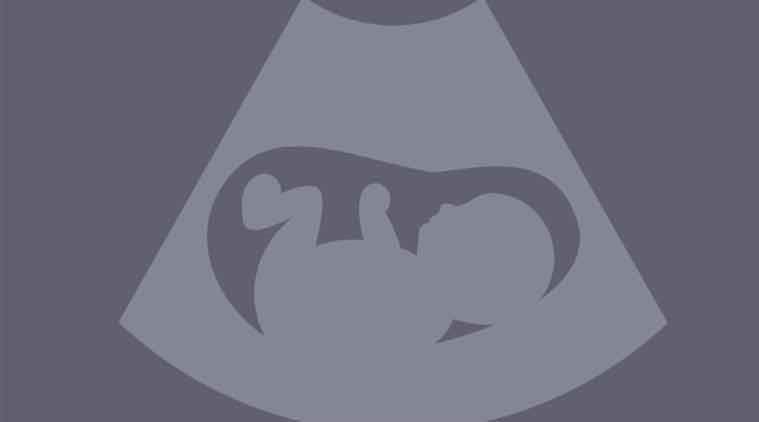- India
- International
1.56 crore abortions estimated in India in 2015; 81% through medication: Study
#GenderAnd Development: Most abortions take place without prescriptions and outside of facilities via chemists and informal vendors.
 “Access to safe abortion has to be looked as a woman’s right and a necessity for them to have control over their sexual and reproductive rights,” says Dr. Chandra from the Foundation of Research in Health Systems (FRHS), India.
“Access to safe abortion has to be looked as a woman’s right and a necessity for them to have control over their sexual and reproductive rights,” says Dr. Chandra from the Foundation of Research in Health Systems (FRHS), India.
An estimated 15.6 million abortions took place in India in 2015, as per a study titled “The incidence of abortion and unintended pregnancy in India, 2015,” conducted by the Guttmacher institute and published in The Lancet medical journal on December 11. The whopping figure by far outstrips the minuscule estimate of about 7 lakhs abortions reported by government sources that year. Experts in the fields of public health and demographic studies generally regard this difference as unsurprising as official data on abortions is known to be highly underreported.
Although the cumulative number is enormous due to India’s large population of women in the reproductive age group (15-49), the rate of abortion itself at 47 per 1000 women, as estimated by the study, is in line with the South Asian estimates observed in neighbouring countries Nepal, Pakistan and Bangladesh.
While abortion has been legal in India since 1971, reliable and up-to-date data on incidence and service provision was lacking until now, says Dr Chander Shekhar, a co-author of the study and faculty member at International Institute of Population Sciences (IIPS). The bulk of abortions in India (81 per cent), according to the study, are early-stage and achieved non-surgically through oral medication using an available drug combination (mifepristone plus misoprostol). This is followed by surgical methods (14 per cent) and other potentially unsafe methods (5 per cent).
Also Read | In defence of the victim
The study gets its data from from two major sources — firstly, the nation-wide sale numbers of Medical Abortion pills in India from IMS Health, a firm that publishes international pharmaceutical sales data. And secondly, data from the 2015 Health Facilities Survey of 4001 public and private health facilities in six Indian states (Assam, Bihar, Gujarat, Madhya Pradesh, Tamil Nadu, and Uttar Pradesh) and from NGO clinic data, which were extrapolated scientifically for a national perspective.

A rate of 70 unintended pregnancies per 1000 women, as estimated by the Guttmacher study, and the finding that nearly half of all pregnancies are unintended suggest that there are still many improvements required in contraceptive services for women, for couples in general and in the context of abortion care — to avoid future need for procedure.

The archaic legal barrier to access

Abortions procedures in India have been legalised under the Medical Termination of Pregnancy Act of 1971. But in the recent years, the clamour about the inadequacy of this archaic law has been rising from both a medical and a rights-based perspective. From a medical perspective, the law has fallen behind the advancement of medical technology because unlike in the 70s, early abortions since the 2000s are being achieved through a combination of oral drugs, which has made provision of safe abortions possible at the primary care level and by health workers other than doctors.
Also read | What’s wrong with India’s abortion laws?
For legal abortion to save lives, it has to be accessible first. India faces a serious dearth of trained doctors and equipped facilities for abortion, especially in the rural and remote parts of the country. Recognising this, 2014 Amendment to the MTP Act proposed to increase the abortion service-provider base, by authorising and training qualified practitioners of alternative medicine (Ayurveda, Unani, Siddha and Homeopathy), qualified nurses and Auxiliary Nurse Midwives (ANMs) to provide non-surgical medical abortions. This provision is also strongly supported by the Guttmacher study.
Recommendations: More providers, more facilities for abortion
Being the first of its kind, the study has considerable potential to guide policies and programmes to improve abortion provisions.
Most government-run primary health centres (PHCs) and many community health centers (CHCs), which are most accessible to women, particularly in rural areas, do not provide abortion services. “Access to safe abortion has to be looked as a woman’s right and a necessity for them to have control over their sexual and reproductive rights,” says Dr Chandra from the Foundation of Research in Health Systems (FRHS), India.
It was estimated that four times more abortions took place within some sort of healthcare facilities (3.2 million), approved or unapproved, in 2015 than the estimate reported to government sources in 2014–15. Almost three fourths of these took place in a private facility.
Still, most abortions take place without prescriptions and outside of facilities via chemists and informal vendors, which suggests the need to improve facility-based services. Research estimates confirm that many women seeking abortions often resort to self-medicating themselves with medical abortion pills that are available over the counter, without direction or prescription from a healthcare provider.
“Chemists who independently dispense up to 73 per cent of abortion medication can therefore play an important role in disseminating correct guidelines of usage of the drugs to the buyer, where to go if she thinks there is a complication and when to feel there is a need to go to the doctor”, says Dr Rajib Acharya, another study co-author, associated with Population Council. WHO, he says, is also working on the guidelines on what information the chemist should be providing the women, to make self-medication even safer.
In addition to training more doctors and improving abortion facilities in public sector units, the study researchers recommend training mid-level health workers and AYUSH doctors, an idea which earlier met opposition from the Indian Medical Association which argued that bringing medical abortion outside the strict ambit of (allopathic) medical practitioners would encourage quackery. However, the public health perspective — including this study — stands that with proper training, the benefit of wider access would drastically outweigh grounds of hesitation.
The study also emphasises another provision of the 2014 amendment to the MTP Act, which is to provide first-trimester (up to 12 weeks) abortions to women as an unqualified right, as opposed to necessitating a doctor’s legal consent.
The complete report can be accessed here: http://bit.ly/2AS9SDT
GenderAnd is dedicated to the coverage of gender across intersections. Use #GenderAnd and join the conversation.
Apr 23: Latest News
- 01
- 02
- 03
- 04
- 05






































